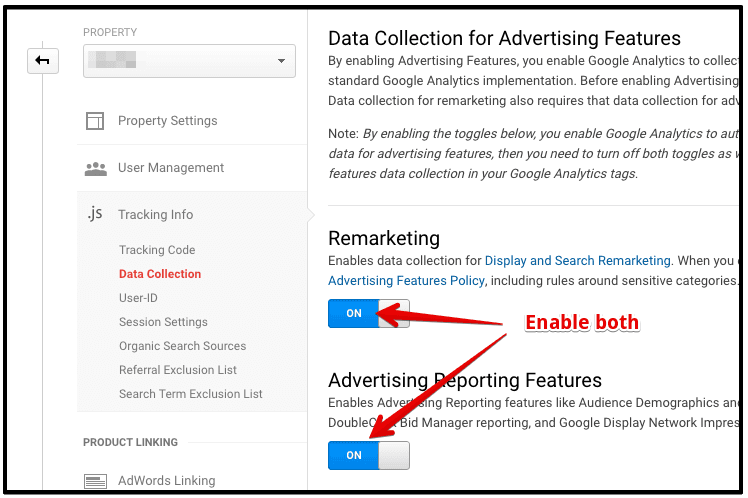Step-by-Step Tutorial: Remarketing In Google Analytics
Step-by-Step Tutorial: Remarketing In Google Analytics
Blog Article
Using Remarketing in Google Analytics: A Comprehensive Overview
Harnessing remarketing in Google Analytics offers organizations a tactical edge in reaching out to potential customers. This guide will certainly shed light on the necessary actions involved in utilizing the full possibility of remarketing in Google Analytics, leading to improved marketing end results.
Understanding Remarketing in Google Analytics
Remarketing in Google Analytics enables companies to purposefully target customers that have actually previously communicated with their website or mobile application. By leveraging information from Google Analytics, services can create personalized remarketing listings based on individual behavior, such as web pages checked out, actions taken, or particular goals attained. This powerful tool makes it possible for companies to re-engage with individuals that have shown rate of interest in their services or products, ultimately increasing the possibility of conversion.
Understanding the different sorts of remarketing techniques is vital for a successful project - What Is “Remarketing” In Google Analytics?. Google Analytics supplies numerous alternatives, including typical remarketing, dynamic remarketing, and remarketing lists for search ads (RLSA) Each type offers a special objective and can be tailored to meet certain advertising and marketing purposes
In addition, examining the performance of remarketing projects is essential for optimizing outcomes. Google Analytics supplies beneficial understandings right into the performance of various remarketing techniques, allowing companies to make data-driven choices and fine-tune their targeting method. By continuously keeping an eye on and changing remarketing efforts based on analytics data, organizations can take full advantage of ROI and drive success in their marketing efforts.
Establishing Remarketing Campaigns

After setting up target market lists, the following action is to link Google Analytics with Google Advertisements. By linking these 2 platforms, businesses can perfectly transfer audience checklists from Google Analytics to Google Ads for remarketing functions. This combination allows for more precise targeting and better campaign efficiency.
As soon as the accounts are connected, organizations can create remarketing projects in Google Ads utilizing the target market details previously specified in Google Analytics. These projects can be customized with specific advertisement creatives, messaging, and bidding techniques to efficiently re-engage with past visitors and drive conversions. By following these steps, businesses can utilize the power of remarketing to improve their marketing efforts and boost ROI.
Utilizing Target Market Segmentation Techniques

Predefined segments in Google Analytics permit you to rapidly evaluate typical target market categories fresh users, returning users, or users who completed a specific goal on your site. Custom sectors, on the other hand, enable you to produce special sections based upon certain standards that are very important to your business objectives. Dynamic remarketing listings instantly readjust based on customer habits, showing personalized ads to customers that have actually engaged with your site in specific methods.
Analyzing Remarketing Efficiency Metrics
Upon reviewing the effectiveness of remarketing projects in Google Analytics, the evaluation of vital performance metrics supplies valuable understandings right into target market engagement and conversion prices. By delving into metrics such as click-through rates (CTR), conversion prices, price per purchase (CERTIFIED PUBLIC ACCOUNTANT), and return on ad spend (ROAS), online marketers can gauge the success of their remarketing efforts. Assessing these metrics makes it possible for online marketers to enhance campaigns, fine-tune target market targeting, and allot budgets efficiently to boost overall remarketing performance.
Enhancing Remarketing Approaches
When refining remarketing strategies in Google Analytics, concentrating on target market division is paramount for achieving project success. By separating your audience into specific sectors based on their behavior, demographics, or interests, you can customize your advertisements better to every group. This targeted method enhances the likelihood of engaging customers who have actually already shown rate of interest in your services or products, causing greater conversion rates.
One more critical facet of enhancing remarketing strategies is continuously screening and refining your projects (What Is “Remarketing” In Google Analytics?). A/B testing various ad creatives, messaging, or deals can aid you recognize what resonates best with your target market and drives the most conversions. By assessing the efficiency of these examinations in Google Analytics, you can make data-driven choices to optimize your remarketing efforts better
Additionally, leveraging dynamic remarketing can substantially enhance your project results. This attribute permits you to show tailored advertisements to customers based upon their past communications with your website, showcasing services or products they have actually formerly checked out. By check over here providing customized material to individuals based on their actions and interests, vibrant remarketing can help enhance involvement and drive conversions.
Verdict
In verdict, using remarketing in Google Analytics is a tactical technique to target users who have actually formerly engaged with a website. By developing customized audience lists and making use of target market division strategies, businesses can enhance remarketing projects for increased conversion prices. Analyzing performance metrics and continually optimizing techniques are crucial for making the most of the performance of remarketing efforts.
Google Analytics uses numerous options, including typical remarketing, dynamic remarketing, and remarketing lists for search ads (RLSA)After setting up click here to read audience lists, the next action is to link Google Analytics with Google Advertisements. By linking these 2 systems, companies can flawlessly move audience listings from Google Analytics to Google Advertisements for remarketing purposes.When the accounts are linked, organizations can create remarketing campaigns in Google Advertisements making use of the audience provides previously defined in Google Analytics.When refining remarketing approaches in Google Analytics, focusing on target market segmentation is critical for achieving campaign success.
Report this page